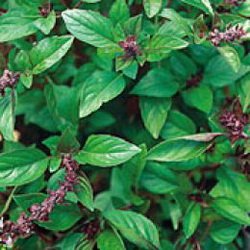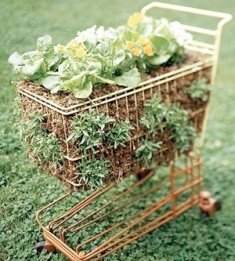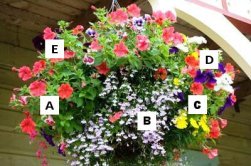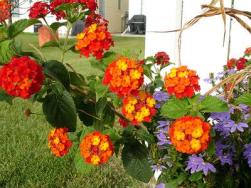How to Grow Basil From Seed in Containers, Tubs and Pots
If you've ever wondered about how to grow basil from seed, this comprehensive guide will get you started on the path of herbal bliss.
<Basil is a wonderfully fragrant herb that is a great addition to Mediterranean, Italian, and Thai dishes, and for homemade pesto.
Anywhere you use tomatoes, basil is a fantastic addition.
Try it in pasta sauces, on pizza, or in a tomato salad with feta cheese and black olives.
Basil, like many herbs, is easily grown in a container or in a garden and doesn't require as much attention as some plants do.
Tips For Growing Basil From Seed
To learn how to grow basil, take these basic rules into consideration:
Basil can thrive in most soils, but prefers a slightly acidic soil, with a pH between 5.5 and 6.5. If growing from seed, plant each seed 12 inches apart or more – under the right conditions, basil plants can grow quite large in diameter. For optimal growing conditions, basil needs well drained soil and about 1.5 inches of water a week. |
If you're unsure of how much water your basil plant has received, error on the side of caution and keep the ground semi-dry. Basil plants are hardy but too much water can kill them.
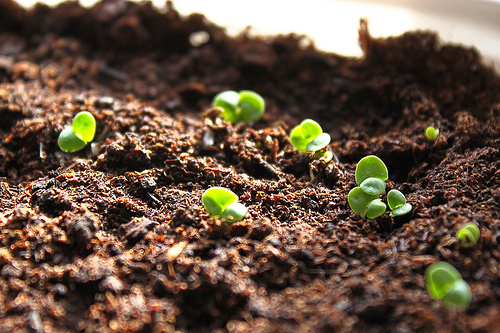
Photo used under a Creative Commons licence with the kind permission of andyhay and Flickr
Share Your Tips on How to Grow Basil
Have a great piece of advice on growing basil for new herb gardeners? Click here to tell us about your tip. We'll all be richer for your wisdom!
Basil Plant Care
Now that you know the basics of how to grow basil, you’ll need to learn how to take care of your plants.
The good news is that basil plants are pretty easy to take care of and can basically look after themselves.
But don’t go on thinking they don’t need a little TLC!
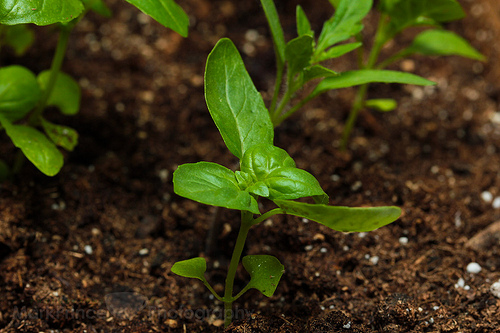
Photo used under a Creative Commons licence with the kind permission of coffeegeek and Flickr
Basil plants (and herbs in general) love organic compost, so mix some in with their soil; this applies to container basil too.
Water your basil plants once a week and at the base, not from above. The leaves are delicate and may not be able to withstand the force.
Make sure your garden is weed-free as weeds can encroach on basil's root system. Also, if you see any flowers growing on your basil plants, prune them. This will ensure the plant's resources are focused on plant's flavor and leaf growth.
How to Grow Basil: Harvesting Basil
When you feel that your basil plant has enough leaves to survive a harvest, pick a few off, starting at the top of the plant.
If you have multiple basil plants, pick a few leaves from every plant, not just one. Picking from the top encourages a bushier plant, resulting in more leaves.
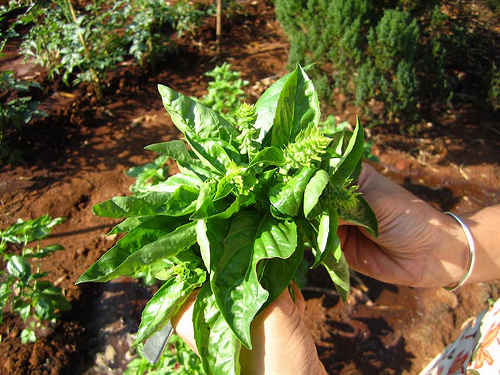
Photo used under a Creative Commons licence with the kind permission of yogita mehra and Flickr
Harvesting on a regular basis is a good idea to prevent flowering, which in turn shortens the timeframe the basil will grow.
A good rule to remember for most plants is that when the top is removed, the plant will grow wider and bushier, but not taller.
If you want to try to keep your outdoor basil plant growing throughout the year, you could attempt to dig it up and transplant it into a large pot. Ensure you mix potting soil in with soil from the garden it was growing in.
Share Your Tips on How to Grow Basil
Have a great piece of advice on how to grow basil? Click here to tell us about your tip.
How to Dry Basil
Once you've successfully learned how to grow basil and have a big crop, you probably won't be able to use it all at once. You can freeze basil, but most people choose to dry it.
Basil can be dried with a dehydrator, or just by hanging upside down in large bunches, tied with string or twine.
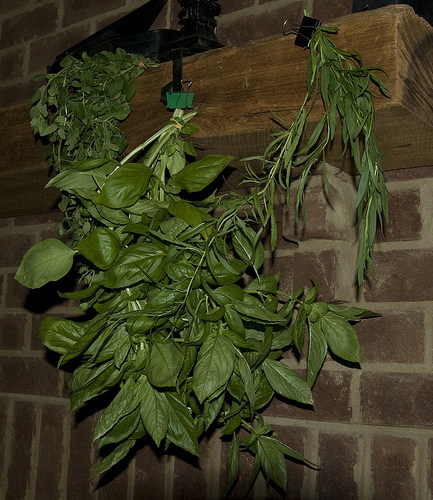
Photo used under a Creative Commons licence with the kind permission of tclarkcreations and Flickr
To dry basil in a dehydrator, place the leaves in for about an hour. If the leaves are dry and crispy - remove. If not, leave in the dehydrator for 30 minutes at a time until they're dry.
To dry out basil without a dehydrator, tie the leaves together in bunches and hang upside down in a dry room. After a week or so, they should be dry. Once dry, store them in an air-tight container.
How to Grow Basil Indoors
Basil is a great indoor plant, as long as temperature and lighting conditions mimic optimal outside conditions.
Use a container that is large enough to foster a strong root system, but small enough to fit on a plant stand or windowsill.

Photo used under a Creative Commons licence with the kind permission of lydiat and Flickr
Ensure the plant gets at least six hours of sunlight per day and if using fluorescent lights, keep the light above the plant for 14 hours a day.
Water thoroughly, and allow the top 1 inch of soil to dry out before watering again. Fertilize every 2-3 weeks and supplement the soil with an organic compost.
Like its outdoor brother, indoor basil can be harvested and dried, either by carefully plucking the leaves, or by cutting the entire plant.
Hydroponic Basil
A little-known fact about soil is that it’s actually just a reservoir for nutrients. Hydroponics takes this idea to a whole new level, allowing you to grow plants in a soilless environment using a nutrient-rich solution.
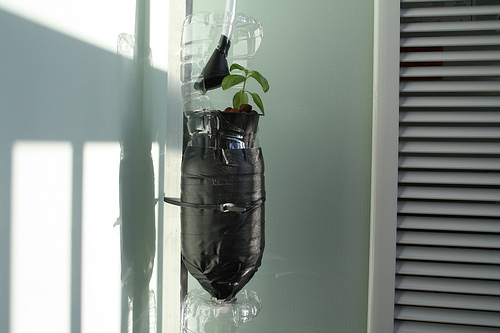
Photo used under a Creative Commons licence with the kind permission of chadmagiera and Flickr
How to Grow Basil Hydroponically
To begin, start basil seeds in a seed-growing medium, like peat moss starter plugs. Once the seedlings have sprouted, you're free to begin the transfer over to containers in your hydroponic system.
You can also use starter plants from a nursery. Ensure you wash off and remove any dirt from the roots.
At the early stage of a hydroponic basil plant, its nutrient requirements are low. Follow the directions on your hydroponic nutrient solution and check the pH levels periodically. Remember, basil likes a pH between 5.5 and 6.5.
Most hydroponic basil experts recommend the nutrient film technique or deep water culture method, but there are a number of other hydroponic systems available.
Read more about the hydroponic system of growing plants indoors here.
cilantro is primarily used fresh, it's not common to dry and preserve the leaves. Dried cilantro leaves lose most of their flavor.
Share Your Tips on How to Grow Basil
Have a great piece of advice on growing basil for new herb gardeners? Click here to tell us about your tip. We'll all be richer for your wisdom!
Basil Varieties
Although you might think basil is basil, there are actually dozens of basil varieties, each with their own color, smell and taste. Click their names to buy seeds from Amazon.
Sweet basil is the most common variety in America and is used heavily in Italian cuisine. Many spaghetti sauce and pizza recipes call for fresh sweet basil and sweet basil is one of the key ingredients for pesto sauce.
African Blue basil, sometimes known as African basil, is a unique variety of basil, with its beautiful blue foliage and pretty flowers (if you don't prune them).
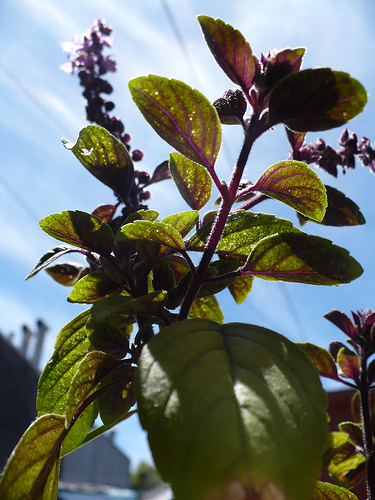
Photo used under a Creative Commons licence with the kind permission of gabriellesarah and Flickr
This variety of basil has more of a clove flavor, and can grow well in a container. This is an extremely drought-tolerant herb and does well with only 2-3 hours of sunlight a day. This is one of the most cold-tolerant of all basil varieties available as well.
Holy basil, or Sacred basil, is widely known for its purported medical benefits. Holy basil is said to have anti-cancer properties, the ability to lower blood glucose and cholesterol levels, and has anti-oxidant properties. Due its clove-like flavor, this type of basil is often used in Thai cuisines.
How to Grow Thai Basil
Thai basil is actually a type of Sweet basil, but originated in southeast Asia, not Europe. Thai basil is a common ingredient an many popular Thai dishes, such as curry and Three-Cup Chicken.
A few basil varieties have a strong presence in Thai and Southeast Asian cuisines, namely Thai basil, Lemon basil, and Cinnamon basil.
Thai basil has a stronger flavor and scent than traditional Sweet basil, and also holds up to longer cooking times, making it a great spice to have around.
If you're interested in how to grow Thai basil, follow the directions previously mentioned, ensuring you give Thai basil at least six hours of sunlight, with well-drained soil. This basil can grow up to 2.5 tall and wide, so leave it plenty of room!
Lemon basil, named for its strong lemon scent, is a common ingredient in many Thai curries, and is also used on salads. Growing Lemon basil is relatively the same process as most other basil varieties.
Cinnamon basil is similar to a Sweet basil, but it actually contains cinnamate – the compound that gives cinnamon its distinct flavor and smell. Due to its cinnamon-like nature, cinnamon basil can be used in teas and deserts.
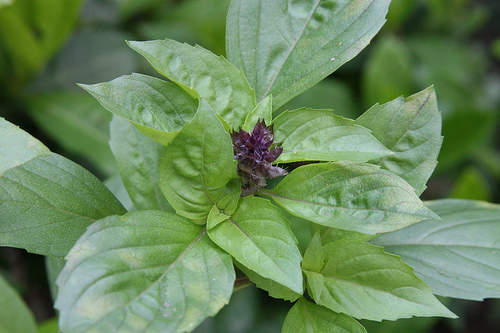
Photo used under a Creative Commons licence with the kind permission of livinginmonrovia and Flickr
Cinnamon basil is said to ward mites and aphids away from gardens, making this a great companion for your tomatoes!
Share Tips on How to Grow Basil in Containers
Do you have any tips on how to grow plant, grow and harvest basil in containers? Please share them by clicking here. Other visitors will thank you.

